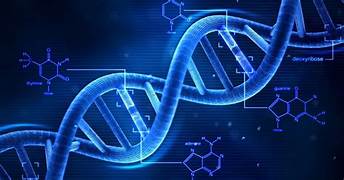Molecular Computing: An Alternative to Silicon-Based Computers
The world of computing has undergone dramatic transformations since its inception. From mechanical calculators to the microprocessor-driven machines that power everything from smartphones to supercomputers, technological advancements continue to push the boundaries of what is possible. However, as demand for more powerful, energy-efficient, and smaller computing devices increases, researchers are exploring alternatives to conventional silicon-based computing. One such potential revolution is molecular computing, which harnesses the unique properties of molecules to perform computational tasks.
This article delves into the emerging field of molecular computing, exploring its potential, challenges, and how it could reshape the future of computing.
What is Molecular Computing?
Molecular computing is a form of computing that uses biological molecules, particularly DNA, proteins, or other organic compounds, to perform computations. Unlike traditional silicon-based computers, which rely on electrical signals to represent and manipulate data, molecular computers leverage the inherent properties of molecules, such as their ability to interact, bind, and store information in ways that conventional circuits cannot.
In molecular computing, computation is often carried out at the molecular or nanoscale, which offers a range of potential advantages, including faster speeds, reduced energy consumption, and more compact designs. These molecular processes are facilitated by biochemical reactions, which can be engineered to process information in a highly parallel and efficient manner.
The ultimate vision of molecular computing is to create a new generation of computers that are much smaller, faster, and more energy-efficient than today’s silicon-based systems. These computers could enable breakthroughs in a wide range of fields, from artificial intelligence to biomedical research.
The Building Blocks of Molecular Computing
Molecular computing draws from various disciplines, including chemistry, biology, physics, and computer science. The basic building blocks of molecular computing include:
1. DNA Computing
The concept of DNA computing was first proposed by Leonard Adleman in 1994. In this groundbreaking experiment, Adleman demonstrated that DNA molecules could be used to solve computational problems, specifically the directed Hamiltonian path problem. In DNA computing, information is stored in the sequences of nucleotides (adenine, cytosine, guanine, and thymine, or A, C, G, T) in DNA strands. These sequences can then be manipulated and processed through biochemical reactions such as hybridization, ligation, and cleavage to perform computations.
DNA computing’s major strength lies in its ability to process information in parallel. Since millions of DNA strands can be synthesized and manipulated simultaneously, DNA-based systems can potentially perform complex computations in a fraction of the time required by conventional computers.
2. Protein Computing
Protein computing is another branch of molecular computing that exploits the functional properties of proteins to perform computations. Proteins are made up of long chains of amino acids that fold into complex three-dimensional shapes, and their biochemical functions can be harnessed for computational purposes.
Protein computing has the potential to outperform traditional silicon-based systems in certain tasks, particularly in areas that require biochemical processes, such as drug discovery, genomics, and environmental sensing. For example, protein-based logic gates can be created to simulate digital computations by using the folding and unfolding of proteins in response to specific biochemical inputs.
3. Quantum Dots and Molecular Electronics
Another approach to molecular computing involves the use of quantum dots and molecular electronics. Quantum dots are semiconductor particles that are small enough to exhibit quantum mechanical properties, such as electron confinement. These properties make quantum dots ideal for use in molecular computing, as they can be manipulated to perform complex operations at the molecular scale.
Molecular electronics, which relies on the manipulation of individual molecules to create electronic components such as transistors and diodes, offers another promising avenue for molecular computing. Molecular-scale circuits have the potential to be faster and more energy-efficient than silicon-based circuits, with the ability to perform computations in parallel, offering new possibilities for ultra-high-performance computing.
Advantages of Molecular Computing
Molecular computing holds several potential advantages over conventional silicon-based computing, particularly in terms of efficiency, scalability, and versatility.
1. High Parallelism
One of the most significant benefits of molecular computing is its ability to perform computations in parallel. In traditional computers, processors perform tasks sequentially, meaning that each step must be completed before the next one can begin. In contrast, molecular computing systems can perform many computations simultaneously because each individual molecule can represent and process information in parallel. This enables faster and more efficient computation, particularly for tasks that require massive amounts of data processing.
2. Miniaturization and Density
Molecular computers are potentially much smaller than their silicon counterparts. While silicon-based computers rely on the miniaturization of transistors and integrated circuits, molecular computing offers the possibility of achieving even greater miniaturization. Molecules are incredibly small—much smaller than transistors—so molecular computing devices could be orders of magnitude smaller than current computers. This could allow for the creation of ultra-compact, lightweight computing devices that could be used in applications ranging from medical implants to environmental monitoring.
Moreover, molecular computing systems could potentially store vast amounts of information within a small physical space. DNA, for example, has an incredibly high data density, with a single gram of DNA being capable of storing up to 215 petabytes (215 million gigabytes) of data.
3. Energy Efficiency
Another significant advantage of molecular computing is its energy efficiency. Conventional computers consume substantial amounts of energy, particularly as they increase in processing power. In contrast, molecular computing systems use biochemical reactions that require far less energy. For example, DNA computing typically operates at room temperature and requires minimal external energy to carry out computations. This energy efficiency could be critical for future computing devices, especially as energy consumption continues to be a growing concern in the digital age.
4. Biocompatibility and New Applications
Molecular computing offers exciting possibilities for applications that intersect with biology and medicine. The use of biological molecules like DNA and proteins could make molecular computers inherently biocompatible. This opens the door for applications in areas like biotechnology, healthcare, and environmental monitoring, where devices could potentially be integrated directly into biological systems to perform diagnostics or therapeutic functions.
For example, molecular computers could be used for real-time disease detection, personalized medicine, or even in drug delivery systems, where computations could be performed inside the body to identify and treat specific health conditions.
Challenges and Limitations of Molecular Computing
Despite its promise, molecular computing is still in its early stages and faces several challenges that must be overcome before it can be widely adopted.
1. Scalability
One of the primary obstacles to the widespread implementation of molecular computing is scalability. While small-scale experiments have demonstrated the feasibility of molecular computing, creating large-scale molecular computing systems that can handle complex tasks is a significant challenge. Scaling up molecular systems requires overcoming issues related to the stability and reproducibility of molecular components and ensuring that the biochemical reactions involved can be controlled and maintained consistently.
2. Error Rates and Reliability
Molecular computing systems are prone to errors due to the inherent instability of molecules and the complexity of biochemical reactions. DNA strands, for example, can degrade or mutate over time, and biochemical reactions may not always proceed as expected. These issues make it difficult to build reliable and fault-tolerant molecular computing systems that can perform computations at the same level of accuracy as silicon-based computers.
3. Integration with Existing Technologies
Another challenge is integrating molecular computing with existing computing infrastructure. Molecular computing is fundamentally different from traditional silicon-based computing, so finding ways to combine the two in a cohesive and efficient manner is a complex problem. Moreover, creating standardized programming languages and tools for molecular computing is still an ongoing research effort.
4. Ethical and Environmental Concerns
Molecular computing could also raise ethical and environmental concerns. As molecular systems increasingly interact with biological materials, questions about the potential for biohazards, the impact on ecosystems, and the long-term effects of widespread use of molecular technologies will need to be addressed. Additionally, the use of genetically engineered molecules may raise concerns about biosecurity and the unintended consequences of altering biological systems.
Conclusion
Molecular computing represents an exciting and potentially transformative alternative to traditional silicon-based computing. By harnessing the unique properties of molecules, including DNA and proteins, molecular computers have the potential to achieve remarkable advancements in computational power, energy efficiency, and miniaturization. While significant challenges remain—such as scalability, error rates, and integration with current systems—the continued exploration and development of molecular computing could eventually lead to a new era of computing that revolutionizes industries ranging from medicine to artificial intelligence.
As research continues to advance, molecular computing may one day provide the key to solving some of the most complex and resource-intensive computational tasks, opening up a host of new possibilities for technology and society.


